By Jon Bergmann
I am about to complete a book about the relationship between flipped learning and homework. While writing the book, I realised that I needed to hear from students about their perceptions and thoughts about flipped homework. I reached out through my network of flipped teachers and asked them to have their students take a survey. Before looking at the survey results, I want to emphasise that there is great debate about the value and purpose of homework. Some educators feel that homework should never be assigned, while others see it as a vital part of learning. I have read the research and have found studies on both sides of this issue. The intention of this article is to focus on students’ perceptions in classes where teachers are sending home the flipped videos as homework prior to class. The survey revealed some interesting data and insight into how flipped learning homework is perceived by the most important stakeholders in education, the students.
A total of 2,344 students from all over the world took the survey, with the majority of responents coming from the United States.
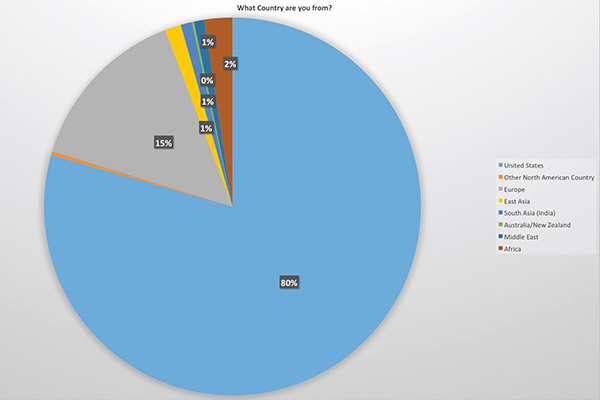
Students from all grade levels took the survey, with most in Grades 6–12.
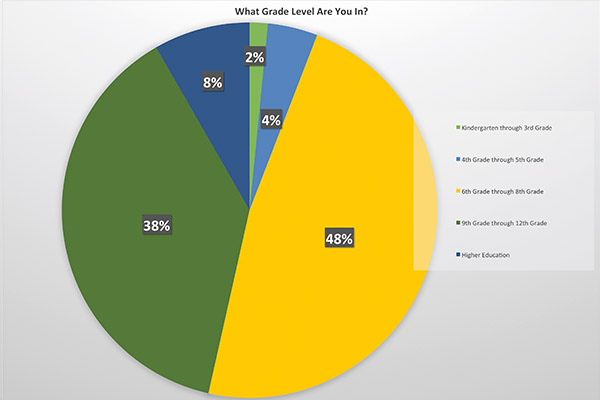
The most common subjects flipped were maths and science, but there was a great representation of students in other subject areas. The data below might also be deceptive as the percentages do not add up. This is because many of the students were in more than one flipped class at their schools.
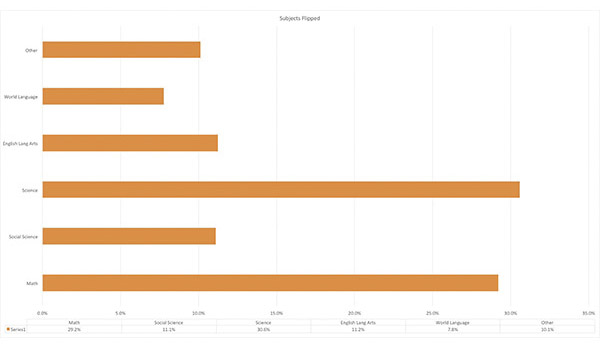
The first set of questions revolved around the issue of time: How long were their teachers’ flipped videos? How much time did it take students to complete a flipped video assignment, and did a flipped homework assignment take them more or less time than a non-flipped homework assignment?
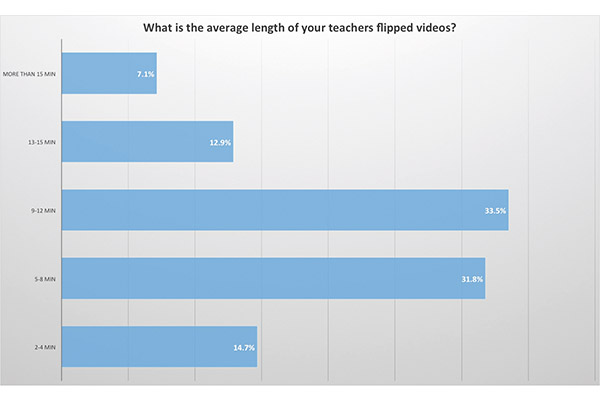
This response was encouraging because I have been teaching teachers for years that to effectively flip a classroom, it is imperative that the videos be short. Most teachers seem to be following best practices.
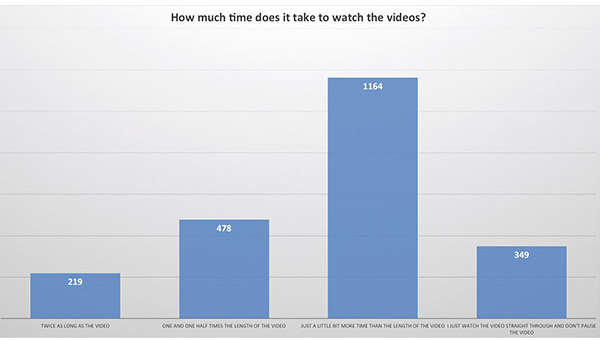
I was a bit surprised by this data. I generally think students should take between one and one half to two times the length of the video interacting with the video content. I see two options: either I am wrong and good comprehension can take much less time, or students could grow and learn how to more effectively interact with a flipped video.
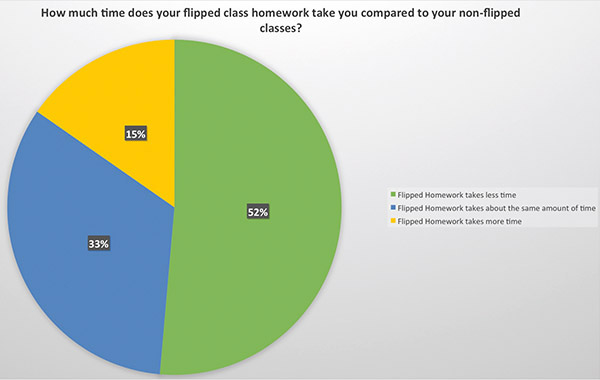
This data was very promising, because the vast majority of students report that flipped homework is taking them less time. But if students are spending less time on a flipped homework assignment, does that translate into lower performance and comprehension?
This question was followed up with a question about comprehension of class content. Note, this data is all from the student perspective and has not been correlated with actual student achievement. There are studies which have shown student achievement gains in flipped learning. The data below suggests higher student achievement, but does not prove it. The question was asked on a 1–5 scale, with a 1 indicating that flipped videos hurt their understanding of class content and a 5 indicating that it greatly helped their understanding of class content.
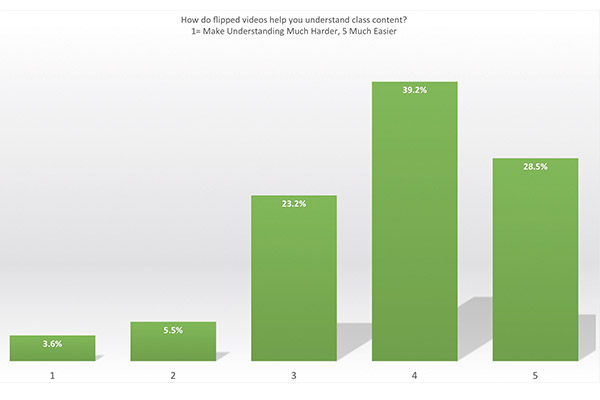
The students were then asked if they had to choose between a flipped or a non-flipped course, which would they choose? As can be seen below, most either prefer a flipped course, or have no preference.
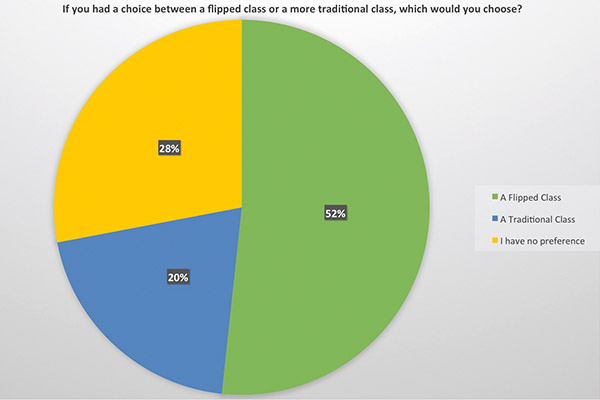
The survey was finished with two open-ended questions about advantages and disadvantages of a flipped video homework assignment. With over 2,000 responses, the following is a fair sampling of the students’ thoughts.
Advantages
| We can do assignments at all hours of the day. |
| You get to ask questions about homework while doing it in class. |
| It helps us to do less work but understand better. |
| When you watch the video first and then take notes and finally do the homework, then that makes it a whole lot easier and less stressful. |
| I am more focused on the task and can learn at a better pace compared to when the teacher is teaching the entire classroom. |
| You can re-watch the videos if you do not understand. |
| It is easier to understand and the homework does not take as long. |
| We have a chance to do homework inside and outside of school. |
| You have time to think and it is easy for you to pass your assignments and assessments. |
| My class has more time for discussion and my teacher can answer more questions that I have. |
| Students do harder things in class, and can have questions prepared for their teachers. |
| You can do it even if you are confused and then ask questions when you get to class, rather than not being able to do it at all. |
| In a traditional classroom the homework is a piece of paper that can easily be lost, but in a flipped class with electronic homework we can retrieve the homework as long as we have access to a computer. |
| It is a lot easier and you do it on your own time and you learn at your own pace. |
Disadvantages
As a note, a large percentage of students said that there were no disadvantages, some being quite insistent about it.
| If you are confused you have to wait till tomorrow or it takes a while and sometimes they do not help us so sometimes it is really confusing. |
| We cannot ask questions while watching the video, we have to email our teacher or wait until class the next day. |
| Some of the disadvantages are that sometimes the video can be too long and I will have less time for other subjects. |
| I am a ‘hands-on’ learner so I do not get it quite as much as I do at school. |
| It is difficult to stay focused on the subject. |
| I have to use my computer and my WiFi is awful. |
| If a student does not do a homework task they will not know what is going on, or if they are attempting to take notes and do not understand something they cannot get another explanation that they might understand (unless the teacher lets you ask questions about the notes the next day which our teacher does). |
| Sometimes we need a teacher to teach us if we do not get it. |
In looking at the responses above and the remainder in the survey, there were definitely students who had some difficulty accessing the content. This illustrates how important it is to ensure equitable access to a flipped video for all students. The other major theme is that students wanted help when they were first interacting with the content. This is also touted as a strength in the increased interaction during class.
The survey highlights several key findings:
- Most students prefer the flipped classroom model.
- Most students spend less time on homework in a flipped class
- Most students feel they understand class content greater in a flipped classroom.
- Students like the increased interaction they get with their teachers in a flipped class.
- There is a need for greater training on how to ensure access for all students when a teacher first flips his/her class.
- For those students who do not prefer a flipped classroom, more research needs to be done on why this is and what, if anything, needs to be changed or adopted to meet the needs of these students.
Though the survey has been finished in preparation for publishing the book, it has been left open. Teachers using the flipped classroom model are encouraged to have their students take the survey (available at http://bit.ly/fliphw). For those interested in learning more, I will be hosting FlipCon Gold Coast 2016 (13–15 October 2016) and FlipCon Adelaide 2016 (17–19 November 2016). For more information or to register, visit FlipConAus.com
Jon Bergmann is one of the pioneers of the Flipped Class Movement. Jon is leading the worldwide adoption of flipped learning by working with governments, schools, corporations, and education non-profits. He is the author of seven books, including the bestselling book: Flip Your Classroom, which has been translated into 10 languages. He is the founder of the global FlipCon conferences which are dynamic engaging events that inspire educators to transform their practice through flipped learning.


Latest posts by Education Technology Solutions (see all)
- Network Technologies Driving Sustainability for Education and Hospitality in 2025 - May 6, 2025
- Keypath Education Launches AI-enabled Short Course Platform to Drive Career Progression for busy Professionals - February 19, 2025
- Lumify Work Partners with AI CERTs™ to Bring Cutting-Edge AI Certifications to ANZ & PH - February 5, 2025
You must be logged in to post a comment.


There are no comments
Add yours